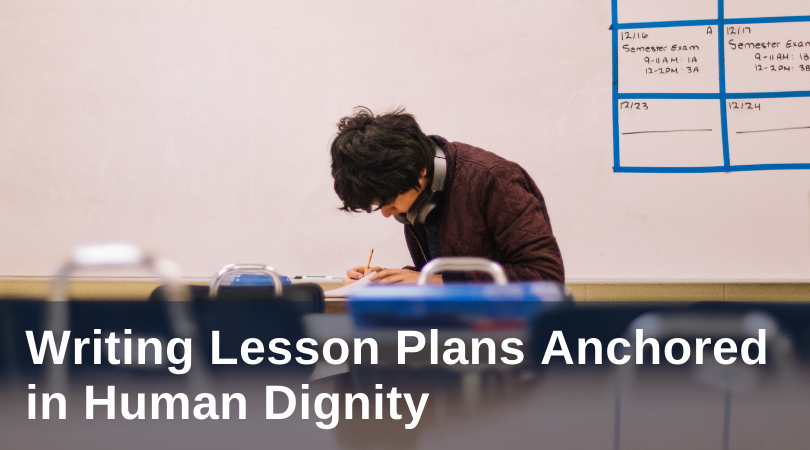
During my second year of teaching, I had a very unique schedule. After my second-hour pre-calculus class, my sophomore theology students walked into the room for Church History. Given the sharp difference between the two classes and my personal interest in mathematician-theologians like René Descartes and Blaise Pascal, I began asking how I could make my math classroom a place for students to encounter the faith. Certainly this is the ideal. A math class, or any class, in a Catholic school ought to have a distinctive character, a formative dimension that transcends the intellectual component of education.
Simple steps came to mind as I pondered my question. Live as a faith witness. Start class with prayer. Display a faith-related poster.
But what about my class content? Could I bring students to a genuine encounter of the Catholic faith through math instruction?
Like many teachers, my lessons typically revolved around an anchor problem or question. This, to me, was the opportunity to authentically integrate the faith into my class such that it did not appear to students as an awkward tack-on. For example, my lessons on exponential and logarithmic functions provided the right mathematical lens for students to dive deeper into China’s one-child policy. After studying the one-child policy and its origins, I developed an anchor problem for this unit that required students to apply their understanding of exponential and logarithmic functions while also considering the ethical dimension informed by Church teaching. This allowed me to develop students’ abilities to view a situation (like the one-child policy) from multiple perspectives, the mathematical and the ethical.
Anchoring a lesson in a human dignity issue is a natural way to authentically present students with a situation that requires multiple levels of analysis. Developing anchor problems like this requires considering the range of human dignity issues from abortion to immigration to poverty, careful study and research, conversation with colleagues, and consultation of existing resources. With an anchor problem in mind, attention must also be paid to the integration of relevant Church teaching. Being intentional about properly framing questions and clearly presenting Church teaching requires significant attention and, in some cases, scriptwriting to ensure that the material is accessible for teachers and students alike.
This might sound like a time-consuming and challenging process. It is! However, it is rewarding both for the designer (especially when done in collaboration with colleagues) and the students. Most importantly, this type of encounter is why Catholic schools exist.
While not all teachers have the time or necessary support and resources to create such lessons, the McGrath Institute for Church Life at the University of Notre Dame is taking the lead in creating resources and making them freely available for any teacher to use. They are also reaching out to the community of teachers already deeply invested in this approach. Through the Teaching Human Dignity Resource Contest, winning teachers can work with the McGrath Institute to have their materials incorporated into the Teaching Human Dignity series and made available to teachers worldwide. The unit Exploring China’s One-Child Policy with Exponential and Logarithmic Functions will be made available this semester for any interested teacher.
The task of a Catholic school “is fundamentally a synthesis of culture and faith, and a synthesis of faith and life: the first is reached by integrating all the different aspects of human knowledge through the subjects taught, in the light of the Gospel; the second in the growth of the virtues characteristic of the Christian” (The Catholic School, §37)3 Our job is not simply to produce mathematicians, doctors, and lawyers. No, it’s to form students as saints (who are mathematicians, doctors, lawyers, etc). This goal cannot be accomplished with only one department interested in students’ spiritual development. Rather, it takes a community of teacher-ministers united in a commitment to develop students’ minds and hearts through teaching anchored in faith encounters.
Visit the Teaching Human Dignity resources page by clicking the button below:
Editorial Note: This post originally appeared on NCEATalk, the blog of the National Catholic Education Association on February 23, 2021. It is republished here with permission.
Featured image by Jeswin Thomas via Pexels



